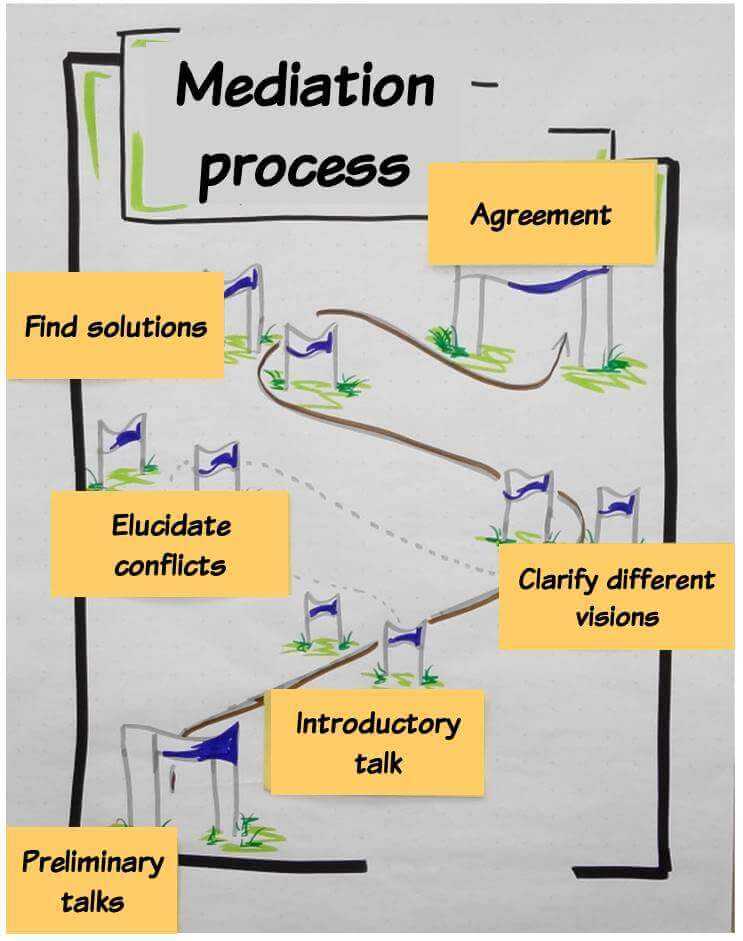Guidelines for a Successful Mediation Process: Navigating Resolutions


Navigating Resolutions: Guidelines for a Successful Mediation Process
Mediation is a powerful tool for resolving disputes amicably and avoiding the adversarial nature of litigation. Understanding and adhering to mediation process guidelines is essential for achieving successful outcomes. In this article, we’ll explore the key principles that contribute to an effective mediation process.
The Basics of Mediation
Mediation is a voluntary and confidential process where a neutral third party, the mediator, assists parties in reaching a mutually acceptable resolution. Unlike a court trial, mediation encourages open communication and collaboration, empowering participants to have control over the outcome.
Voluntary Participation and Willingness to Collaborate
A fundamental guideline in the mediation process is voluntary participation. All parties involved must willingly engage in the mediation and be open to collaborating towards a resolution. The voluntary nature of mediation fosters a cooperative environment, increasing the likelihood of reaching a mutually satisfactory agreement.
Choosing a Qualified Mediator
Selecting a qualified mediator is crucial for the success of the mediation process. A skilled mediator possesses excellent communication and negotiation skills, remains neutral throughout the process, and facilitates productive discussions. Choosing the right mediator contributes significantly to the effectiveness of the mediation.
Establishing Clear Guidelines and Ground Rules
At the outset of the mediation process, it’s essential to establish clear guidelines and ground rules. This includes setting expectations for respectful communication, outlining the structure of the sessions, and ensuring that all parties have an opportunity to express their perspectives. Clear guidelines create a foundation for a constructive and focused mediation process.
Open Communication and Active Listening
Mediation thrives on open communication and active listening. Participants must express their concerns and interests openly, while also actively listening to the perspectives of others. This guideline encourages a deeper understanding of each party’s needs and helps in crafting solutions that address the underlying issues.
Identifying Common Interests and Needs
A key principle in successful mediation is identifying common interests and needs among the parties. While conflicts may arise from differing positions, exploring shared concerns helps build bridges and find solutions that meet the interests of all involved. This approach fosters a collaborative mindset in problem-solving.
Brainstorming and Generating Options
Mediation involves creative problem-solving, and participants are encouraged to brainstorm and generate various options for resolution. This guideline promotes flexibility and innovation in finding solutions that may not be apparent initially. The mediator facilitates this process, guiding participants in exploring alternative options.
Reality Checking and Evaluating Options
As options are presented, reality checking becomes crucial. Mediation process guidelines include an evaluation phase where participants assess the feasibility and practicality of proposed solutions. This step ensures that the agreed-upon resolution is realistic and sustainable for all parties involved.
Drafting a Clear and Comprehensive Agreement
Once a resolution is reached, the next step is drafting a clear and comprehensive agreement. This document outlines the terms and conditions agreed upon by the parties. The mediator helps articulate the agreement in a way that is legally sound and understandable, minimizing the potential for future misunderstandings.
Ensuring Follow-Through and Implementation
The mediation process doesn’t end with the agreement; successful mediation includes ensuring follow-through and implementation of the agreed-upon terms. Participants commit to fulfilling their responsibilities outlined in the agreement, and the mediator may provide guidance on monitoring and enforcement mechanisms if necessary.
Mediation Process Guidelines in Action: Real-Life Example
Consider a workplace dispute where colleagues are at odds over project responsibilities. Mediation, guided by the principles discussed, can lead to a resolution that not only addresses the immediate conflict but also fosters improved communication and collaboration within the team. For more insights into real-life examples and in-depth information on mediation process guidelines, visit Mediation Process Guidelines.
Conclusion: Empowering Solutions Through Mediation
In conclusion, mediation process guidelines serve as a roadmap for parties seeking resolution through collaboration and understanding. By embracing these principles, participants can navigate disputes effectively, fostering a culture of cooperation and mutual respect. For ongoing guidance and resources, visit Great Blog About.







